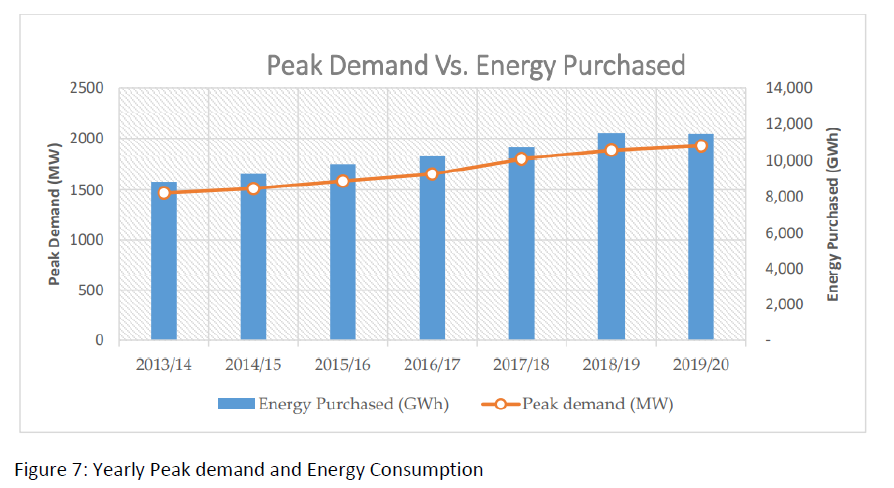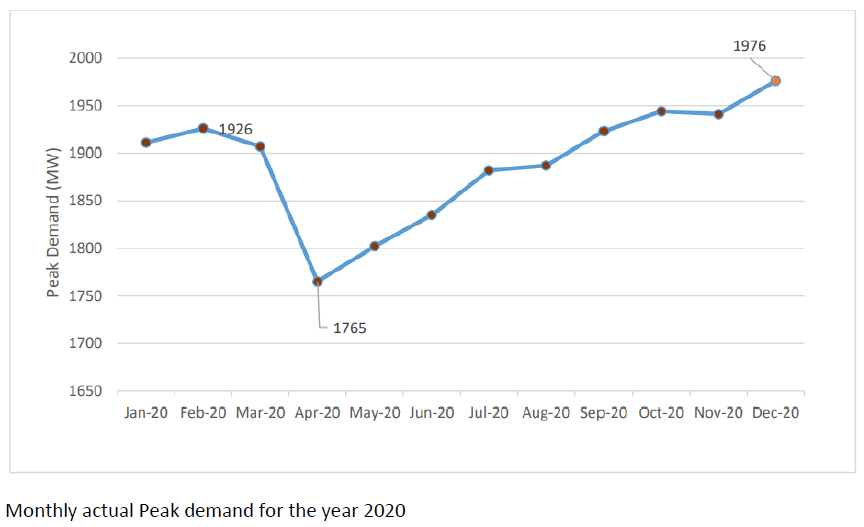Electricity Demand Forecast
Kenya’s Electricity Demand
Electricity is considered an enabler of the world’s economic growth and development. To this end, preparation of an optimal power system expansion plan begins with credible assessment and projection of the future electricity demand. Such an assessment can be carried out based on historical load data, current energy demand and economic parameters such as national Gross Domestic Product (GDP), sectoral growth and end-use consumer behaviour.
The aim is to arrive at a realistic forecast applicable to the entire power sector expansion programme. A demand forecast provides an insight into the sector’s capital investment and expansion decisions. It indicates future capacity (in MW) and energy (in GWh) requirements to enable the planning of generation and transmission investments.
A realistic electricity demand forecast is critical for developing an optimal power system expansion plan. A high load forecast may lead to over-investment in redundant capacities, while a low demand forecast may result in capacity shortfalls that would slow down economic development.
The demand projection process calls for use of a proven methodology, appropriate assumptions and accurate input data. This section of the report provides the national electricity demand forecast for the period 2021 to 2030.
Objectives of the forecast
The main objective of this demand forecast is to develop an acceptable and accurate assessment of the future electricity demand for purposes of an optimal expansion plan for the period 2021-2030. The specific objectives include:
(i) Review the economic environment in relation to electricity demand;
(ii) Review the key demand driving factors identified in previous plans;
(iii) Update assumptions used in the previous forecasts;
(iv) Update the status of the flagship projects;
(v) Include emerging technologies such as Battery Energy Storage Solution (BESS)
(vi) Present demand forecast results for the period 2021-2030.
Overview of the Domestic Economy
The Gross Domestic Product (GDP) for the year 2019 expanded by an average of 5.4%, which was lower than 6.3% growth registered in 2018 as shown in Figure 6.

In 2019, a number of sectors posted impressive performances but the overall growth was curtailed mostly by a slowdown in agriculture, manufacturing and transportation subsectors. The Macroeconomic environment remained largely conducive for growth throughout the year. The provisional estimate for GDP growth in 2020 is 2.6% mainly due to COVID-19 containment measures that have led to a disruption on livelihoods and businesses. This slowed down economic activities in the country and negatively impacted the performance of various sectors and in particular demand for power in the country.
Performance of the Power Sector
Electricity peak demand has been growing gradually over the last 6yrs with an annual growth of approximately 4.6% per annum. The energy consumption increased from 9,280GWh in 2014/15 to 11,462GWh in 2019/20 representing an average growth of 4.5% over the last six years as shown in Figure 7

In 2019/20, energy consumption decreased to 11,462GWh compared to 11,493GWh in the previous year. The overall energy consumption in the financial year recorded marginal growth of 0.05% compared to the previous year 3.7%, while energy purchased contracted by 0.3% from a growth of 7.4% the previous year. On the other hand, peak demand grew to 1,926MW in 2019/20 FY from 1,882MW the previous FY. The onset of COVID-19 pandemic in the second half of the 2019/20 financial year and subsequent
government containment measures created economic shocks, adversely affecting the energy sector. During this period, peak electricity demand declined from 1,926MW in February 2020 to 1,765MW in April 2020, a decline of 8.3% as shown in Figure 8

The steep decline was followed by a gradual recovery as the government eased the containment measures enabling resumption of various economic activities. Peak electricity demand improved gradually and reached the pre-COVID level in October 2020. This was followed by the peak demand of 1,976MW for the year recorded in December 2020.
The specific consumption has also shown a decline over the last five years due to increased connections of low consuming customers and use of more energyefficient equipment. Table 5
summarizes the consumption patterns, consumer trends and customer growth for the last 6 years.
